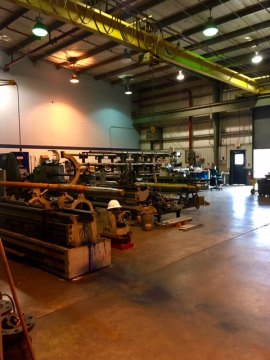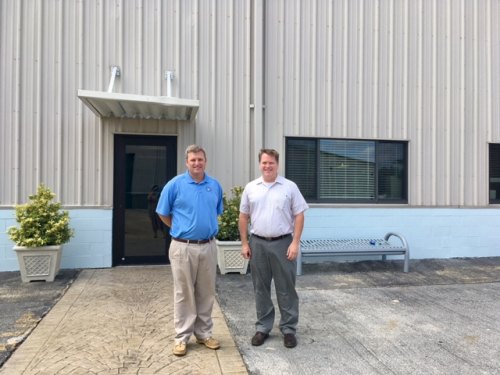A New View of the NC Ferry System
For virtually all first-time visitors to Ocracoke, the experience begins with a ferry ride. This ride never fails to make an impressive first impression: the intoxicating smell of salt air and diesel smoke, the cacophony of hovering laughing gulls, the exotic brogue of the native crew members all combine to let the visitors know they’re going somewhere unlike anywhere they’ve been before.
But after you’ve lived here a few years and ridden the ferries untold times under a wide range of weather conditions it’s easy to start taking all this for granted. Ocracoke residents have even been known to complain a bit about the ferry service. But what we experience as passengers on these ferries is only part of the picture.
There’s a lot to operating the nation’s second largest state ferry system (Washington has us beat by a bit) besides shuttling vehicles and people back and forth across our inlets, rivers, and sounds. Jed Dixon, Deputy Director of the NCDOT Ferry Division, would like for more people to be aware and appreciative of what goes on behind the scenes. For that reason he has been offering guided tours this summer of the Ferry Division’s impressive shipyard at Mann’s Harbor. I took the tour last week to report for the Current.
My alarm went off at 5 a.m. so we (Current editor Sundae and I) could catch the 6:10 ferry to Hatteras. It was a sunrise crossing like so many others but it gave us ample time for a leisurely breakfast at Diamond Shoals Restaurant in Buxton before arriving at Mann’s Harbor for the 10 a.m. tour.
The security guard at the gate checked our names off his list and showed us where to park. The shipyard’s 6-year-old, $7 million paint building is hard to miss on the edge of the area’s extensive salt marsh. As Jed would mention later, the building “changed the Mann’s Harbor skyline.”
We were met at the door by the Ferry Division’s communications director, Tim Hass, who showed us into a conference room where our motley band of attendees were issued hard hats and safety glasses. Then Jed Dixon came in and welcomed the two dozen or so of us. Having first assumed that most of our group were vacationing tourists he expressed some surprise that we’d chosen to spend our day in this industrial setting rather than enjoying the beach. But then it turned out that most were, like Sundae and me, area residents who simply wanted to learn more about the ferries. A notable exception was a Winston-Salem couple who’d read about the tour on the Ocracoke Current!

In the next fifteen minutes Dixon told us more about the Ferry Division than I’d learned in the last twenty years! The Division permanently employs some 450 people, 100 of whom work at the Mann’s Harbor shipyard. The state owns 21 ferries which serve seven routes. (Jed asked if anyone had ridden them all – the Winston Salem couple came the closest, only missing the Curritcuk-Knotts Island route. It's on their bucket list.) Three of the seven routes serve Ocracoke. All together the ferries carried over 800,000 vehicles and almost 1.9 million passengers in 2016.
There are three classes of ferries ranging in length from 120 feet to 220 feet and drawing from 4 feet to 7.5 feet. The largest are the “sound” class (the ones that run to Cedar Island and Swan Quarter), then come the “river” class or “double-enders” that don’t need to turn around at the end of a run. The “Hatteras” class are the older twin-screw Hatteras Inlet ferries with bow thrusters. The division is trying to phase out the Hatteras class mainly to simplify warehouse and maintenance issues by more standardization.

While the Coast Guard requires that each ferry to be hauled out of the water for inspection twice every 5 years, the shipyard also has to stand ready for emergency haulouts for such issues as bent prop shafts or damaged propellers. With its massive system of marine railway cars, the yard is able to service as many as 6 ferries at a time. During routine inspections the Coast Guard measures hull plate thickness. Whenever corrosion has worn away more that 25% of the original thickness, a section of plating will require replacement. The division is constantly involved in detailed cost analyses to determine the point at which it becomes more feasible to replace a ferry than to continue to repair it.

In addition to the paint building, which makes it possible for ferries to be painted year round in all weather conditions, the shipyard has a massive machine shop where new prop shafts were being turned before our very eyes. There’s a welding shop and a sign shop as well where all the labels, decals, and signs are made. The division's administrative offices are on the premises as well. Jed stressed the importance of constant communication between the shipyard and the operational side of the division. Having started out as a captain on the Hatteras Inlet ferries he understands the system from the bottom up and is clearly well positioned to oversee the entire division. I was impressed with the decentralization of their parts and labor. Each ferry terminal has its own supply of frequently-needed parts as well as a master mechanic capable of performing most repairs without needing to bring the vessel to the yard.
Jed ended the tour by bringing us back to the conference room so he could tell everyone a little about the new passenger-only ferry that will carry visitors to Ocracoke starting next year, and is currently being built for the Ferry Division at a private shipyard in Swansboro, NC. Jed called the new passenger ferry operation a "proof of concept" – a way to test the feasibility of an alternate way to get people on and off Ocracoke efficiently.
Jed Dixon came across as justly proud of the N.C. Ferry Division and is clearly eager for more people to have a greater awareness of what they do. I must say that when Sundae and I boarded the 3:10pm boat for our return trip to Ocracoke, I looked at that fine old gal through a new pair of eyes. The ferry looked pretty interesting, too.




This year's Shipyard Tours were planned in honor of the Ferry Division's 70th anniversary. They've been such a success that more opportunities will be offered in the future. Email Tim Hass at tdhass@ncdot.gov if you are interested in making a reservation.




